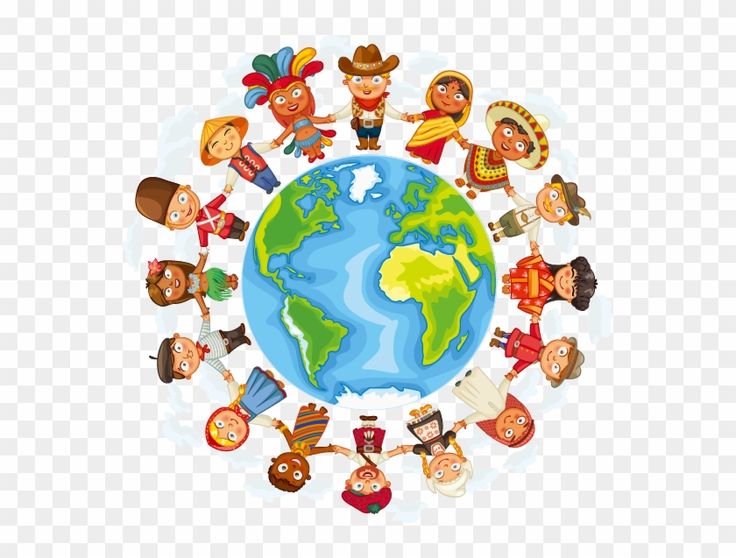Cultural diversity is akin to a vibrant tapestry, woven with myriad threads, each representing different traditions, languages, and beliefs. In the realm of visual representation, cultural diversity clip art serves as a powerful medium to illustrate this intricate mosaic of human existence. These illustrations capture the essence of different cultures, serving as evocative symbols that inspire unity and appreciation among all. By embracing the multitude of identities depicted in these artworks, one can better understand the collective human experience, echoing the age-old adage that ‘strength lies in diversity.’
At the heart of cultural diversity clip art lies the celebration of individual uniqueness. Each piece of art often portrays characters clad in traditional garments, adorned with culturally significant accessories, or engaged in activities reflective of their heritage. Such representations challenge the homogenization of cultures, emphasizing that each identity is a vital thread in the global fabric. The juxtaposition of various elements in cultural diversity clip art—contrasting colors, patterns, and forms—creates a visual symphony, resonating with the viewer on both aesthetic and emotional levels.
The use of clip art to communicate cultural diversity is particularly poignant in educational settings. Teachers and educators can utilize these images to spark discussions about cultural practices, historical contexts, and societal contributions of various groups. When students encounter lively illustrations depicting diverse cultures, they are more likely to engage with and retain the information presented. The amalgamation of visual art and educational content can serve as an insightful gateway to understanding social dynamics and fostering empathy, bridging gaps between disparate communities.
Moreover, cultural diversity clip art provides a platform for marginalized voices, often overlooked in mainstream narratives. Artists who embody various cultural experiences contribute their perspectives through their designs, enabling a broader audience to engage with and appreciate these expressions. The integration of multiple cultural symbols into a single artwork can evoke a dialogue on intersectionality and the complexities of identity. In today’s globalized world, where cultural intermingling is ubiquitous, acknowledging and celebrating these intersections through clip art becomes increasingly vital.
The appeal of cultural diversity clip art also lies in its versatility across various mediums. From digital platforms to printed materials, these illustrations can be employed in marketing campaigns, community events, and social justice initiatives. For instance, a non-profit organization advocating for immigrant rights may leverage cultural diversity clip art to convey its mission, illustrating solidarity among different communities. By featuring diverse imagery, these organizations can resonate more deeply with their audience, reinforcing the idea that they champion the rights of all individuals, regardless of their cultural background.
Art, in any form, is an interpretation of reality. In the context of cultural diversity clip art, artists often draw inspiration from their personal experiences and cultural heritage, allowing them to infuse their work with authenticity and profundity. The resulting imagery often transcends mere representation; it becomes a testament to the struggles and triumphs of various communities. The rich histories encapsulated in each piece invite viewers to explore their curiosities, fostering a spirit of inquiry that transcends superficial understanding.
As the world grapples with challenges such as climate change and social injustice, cultural diversity clip art can serve as a catalyst for positive change. These illustrations can embody messages of sustainability, advocating for the preservation of cultural heritage as part of environmental stewardship. Just as diverse ecosystems rely on a variety of species to thrive, human societies flourish through the coexistence of diverse cultures. By acknowledging the interconnectedness of cultural diversity and environmental conservation, clip art can inspire collective action toward a more sustainable future.
Another notable aspect of cultural diversity clip art is its capacity to counteract stereotypes. By presenting authentic and multifaceted representations of various cultural groups, such illustrations dismantle preconceived notions that may perpetuate discrimination or bias. Instead of relegating cultures to mere caricatures, these artworks humanize individuals, inviting viewers to appreciate the richness of their experiences. This process of breaking down barriers is fundamental to fostering an inclusive society where every voice is valued, and each culture is respected.
The realm of digital art opens new avenues for collaboration among diverse artistic communities. Online platforms allow artists from disparate backgrounds to share their cultural narratives, creating a rich repository of creative expression. Cultural diversity clip art not only serves as a visual representation of these narratives but also stands as a testament to the power of collaboration. Through shared creativity, artists can engage in mutual learning, broadening their horizons while simultaneously promoting their unique cultural identity.
In conclusion, cultural diversity clip art is more than a mere collection of images; it is an artistic embodiment of our shared human experience. These illustrations echo the symphony of voices that compose our society, challenging us to recognize the beauty in our differences. As society continues to evolve, embracing cultural diversity through art will remain a crucial endeavor. The unique appeal of these visual representations lies in their ability to educate, inspire, and unite, urging us to collectively navigate the complexities of our diverse world.
